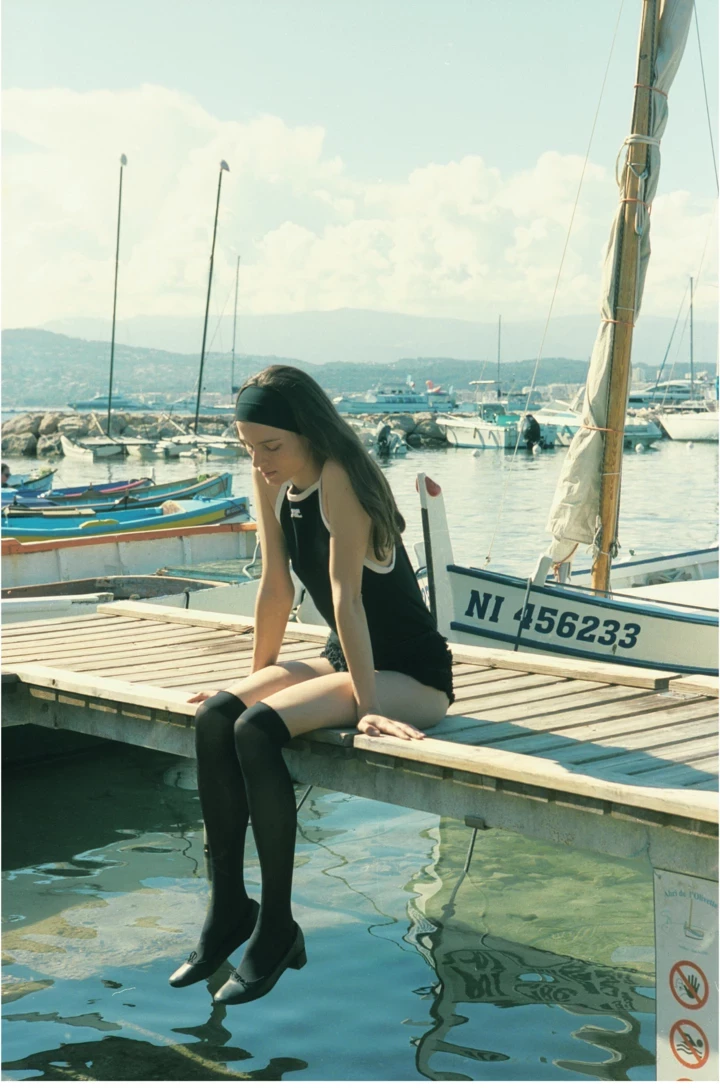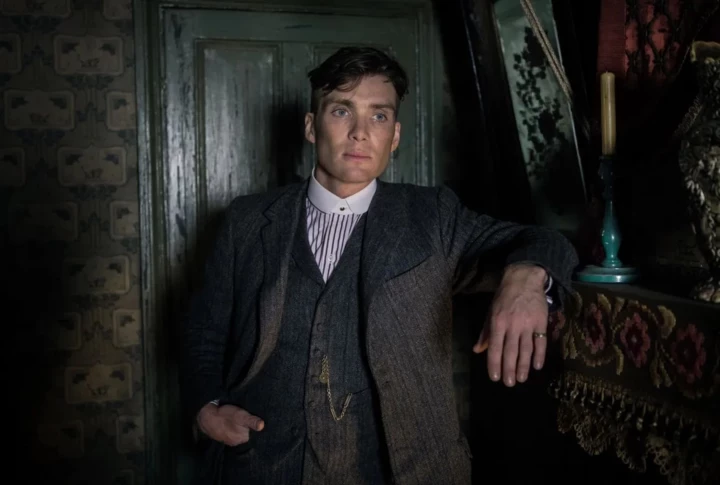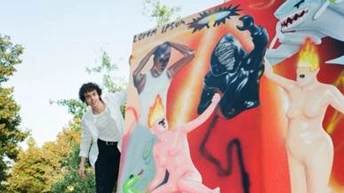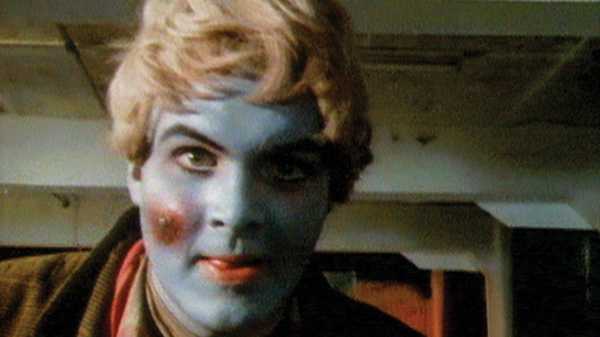
Save this storySave this storySave this storySave this story
Hilton Als
Staff writer
You’re reading the Goings On newsletter, a guide to what we’re watching, listening to, and doing this week. Sign up to receive it in your in-box.
Charlie Atlas was the first director to ask me to write for film. This was a long time ago—the mid-nineteen-eighties—and he was trying to complete a movie called “Ex-Romance,” which featured two of his stars, the dancer-choreographers Karole Armitage and Michael Clark. The idea was that I would write some bits to help tie the film together. It was such a flattering thing, to be hired by Charlie—because by then he was already a legend. Raised in St. Louis, he landed in New York City when he was barely out of his teens; soon, he was working with Merce Cunningham, first on lighting, but in 1974 he became Merce Cunningham Dance Company’s filmmaker-in-residence, producing an incredible array of films that revolutionized the way dance was presented in cinema. And then there were his wonderful set designs and costumes, as well.
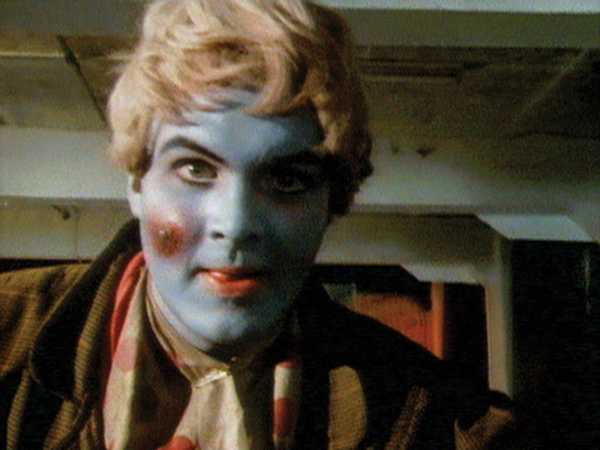
Leigh Bowery, in “Hail the New Puritan.”Photograph courtesy Electronic Arts Intermix
Charlie’s love of making was such a gift to me; it taught me that you didn’t need a fortune to make a movie, as long as you had interesting people to look at. And Charlie always knew the interesting people to film. In addition to Cunningham, Clark, and Armitage, he’s worked with genius figures like Leigh Bowery, Lady Bunny, Anne Iobst and Lucy Sexton, of Dancenoise—the list goes on and on. There’s never been a period when I haven’t felt buoyed by Charlie’s various creations—and, as the best movies do, his work reflects the times when, for the most part, artists had more of a D.I.Y. aesthetic. In fact, looking back, I can see now that the performers Charlie seemed most drawn to were people who created themselves out of thin air—they followed no precedent.
In inventing a stellar performing self, each of Charlie’s stars fit perfectly into his vision: his sui-generis films hadn’t existed before, either. Sometimes, if you watch an Atlas short, you can hear the director laughing offscreen; so great is his delight in what a performer can do, the better to become themselves, that he can’t contain himself. “Just look at that,” his colorful, elegant vision says, time and again. “Isn’t that something?” I haven’t seen Charlie in a long time—just life, nothing more—but it’s amazing how many of his movies I can quote from memory. Many of them are part of the retrospective “Atlas Variations: The Moving-Image Work of Charles Atlas,” at Anthology Film Archives (May 8-June 27). When I watch pictures like “From an Island Summer” (1984) or “Hail the New Puritan” (1986), just two of his early masterpieces, I am back in that world, where the energy of the times gave one the feeling that all things, artistically speaking, were possible, and could be achieved through the beauty of collaboration with a generous director like Charlie, filled with joy, kindness, and a true vision.

About Town
Broadway
“If there are any humans left on Earth in a hundred years,” the doctor Astrov (William Jackson Harper) tells the sad-sack Vanya (Steve Carell), “they’re going to hate us for having lived such stupid, selfish lives.” A hundred and twenty-five years since the première of Chekhov’s “Uncle Vanya,” we’re too absorbed in our own self-hatred and rivalries to spare much resentment for our great-grandparents’ life style. Conveniently, Lila Neugebauer’s staging and Heidi Schreck’s colloquial “translation/adaptation” modernize the original, emphasizing the themes of deforestation and species extinction, which parallel the wrongs that Vanya’s squabbling family perpetrate on one another. Surfacing the comedy and tragedy of daily life is the work of any Chekhov production; here, most of the star-studded cast—including Alfred Molina and Alison Pill—finds the comedy. Carell, aided by Schreck’s script, manages both.—Dan Stahl (Vivian Beaumont; through June 16.)
Dance
The “Seven New Dances” concert that Paul Taylor presented at the 92nd Street Y in 1957 is one of the most infamous events in modern-dance history. It was packed with avant-garde experiments—postures taken from people in the street, long expanses of stillness, sounds that only John Cage was classifying as music—and it received such responses as an exodus of audience members and a review composed of blank space. Paul Taylor Dance Company, to honor the Y’s hundred and fiftieth anniversary, returns to re-create part of the program, with the addition of Alan Cumming reciting droll recollections by Taylor about the incident and what it taught him. Taylor’s popular “Esplanade” serves as a hedge.—Brian Seibert (92NY; May 12.)
Classical Music

Yuja Wang at Carnegie Hall, in 2022.Photograph by Chris Lee
Throughout May, a parade of superstar pianists bring several lively programs to Carnegie Hall. The famously theatrical Yuja Wang leads off with a recital (May 10) that combines mid-century mysticism (Scriabin’s Sonata No. 8, two of Messiaen’s “Vingt regards sur l’Enfant-Jésus”) with the technicolor odysseys of Chopin’s four Ballades, throwing in Debussy’s “L’isle joyeuse” for fun. A week later, Seong-Jin Cho pairs Haydn’s pearlescent Sonata in E Minor with two Ravel pieces (including “Le tombeau de Couperin”) that play on the Baroque. Evgeny Kissin’s program (May 24 and May 29) tours through Brahms’s own set of four Ballades, along with sonatas by Beethoven and Prokofiev. Finally, on May 31, Mitsuko Uchida joins the Philadelphia Orchestra as it performs Ravel’s G-major piano concerto, Debussy’s “La mer,” and a new piece by Valerie Coleman.—Fergus McIntosh (Carnegie Hall; May 10-31.)
Indie Rock
When, in 2012, the members of the Canadian indie-rock band Women scattered to pursue other projects, the guitarist and lead singer Patrick Flegel found refuge in the drag persona Cindy Lee, performing what they call “confrontational pop.” In the twenty-tens, an experimental series of self-released lo-fi cassettes culminated in the wraithlike album “What’s Tonight to Eternity?,” which was long-listed for the Polaris Prize. Cindy Lee’s new album, “Diamond Jubilee,” is even harder to access: a thirty-two-song double disk was issued primarily as a download on a Lee’s Geocities Web site. The record feels like another confrontation, an exhaustive little guitar world deliberately tucked away in a forgotten corner of the Internet, unearthed only for shows like this one.—Sheldon Pearce (TV Eye; May 14.)
Off Broadway

Hampton Fluker plays a waiter in “Staff Meal.”
Photograph by Chelcie Parry
Abe Koogler’s comedy about a reality-bending restaurant, “Staff Meal,” is the theatrical equivalent of the chaos menu. The appetizer course is a meet-cute (Susannah Flood and Greg Keller play singles on a trippy night out) and a meta-theatrical farce (beware the audience member near you, especially if she’s Stephanie Berry); the entrée is an allegory about the theatre’s dwindling ability to support strange art (waiters discuss the vanishing clientele); and dessert is a metaphysical thriller in which one fantastical figure turns out to be another fantastical figure in disguise. Morgan Green’s hallucinatory production relies heavily on the gonzo performer Erin Markey, as a shadowy vagrant who is also, somehow, the restaurant’s faceless backer. Koogler is thinking about the way that theatre relies—so dangerously!—on its capricious funders: “It’s vagrants,” the vagrant says, “all the way down.”—Helen Shaw (Playwrights Horizons; through May 19.)
Movies
The intensity of Joanna Arnow’s first feature, “The Feeling That the Time for Doing Something Has Passed,” is sharpened by the precision of her writing and her direction. She also stars as Ann, a thirtysomething Brooklynite who seeks to be sexually dominated by men. She endures humiliations in her tech-world job and in her relationship with her parents, and her search for submission in the bedroom comes off as an exploration of emotional endurance. One man is too wild, one is too mild, and another, who plays the game right, is as cold as ice. Arnow invests the role with uninhibited physical candor, enacting the men’s orders with a devotion that’s virtually dancelike, in the vein of Pina Bausch; lacerating dialogue and delicately poised images raise Ann’s struggles to a poignant, awkward state of grace.—Richard Brody (Reviewed on 4/26/24.) (In theatrical release.)

Pick Three
The writer Gary Shteyngart on three of the best Martinis in town.
1. My writer friend Amor Towles’s favorite Martini in the city is found at the sumptuous Lobby Bar in the Chelsea, which was once a semi-seedy artist’s paradise and now is not. The Martini there is beloved because it pays homage to the Dukes Martini, named for the eponymous London bar and hotel. To a rather enormous, frozen glass a server performs the “vermouth rinse,” tossing away the vermouth before cold gin or vodka, primed with salt water, is poured. The alcohol is neither shaken nor stirred, creating a ninety-five-per-cent-undiluted Martini, which, at this volume, functions as a kind of uncontrolled insanity.

The Carlyle Hotel’s classic gin Martini.Photograph by Landon Nordeman for The New Yorker
2. At the new outpost of the storied Dante, in the West Village, the eponymous Dante Martini is a heady combination of Ketel One, Fords Gin, Noilly Prat vermouth, grappa-esque Nardini Acqua di Cedro liqueur, and lemon and olive bitters. It’s garnished with black, green, and red Cerignola olives, from Puglia. Dante’s simple fluffy piece of bread with a side of smoked butter is one of the best Martini accompaniments I have had so far.
3. “E. B. White called the Martini the elixir of quietude,” the food critic Adam Platt told me at Tigre, on the Lower East Side. The highlight of Tigre’s Martini menu is the vodka-based Cigarette, which Platt immediately qualified as “smoky as fuck.” Austria’s Truman vodka is shot into flaming orbit by an inventive liquor made by Empirical, a Danish distillery, which presents on the tongue as a flavorful burst of smoked juniper, hence the feeling that a draw of nicotine and tar can’t be far.
Follow the rest of Gary Shteyngart’s Martini tour of New York, in the Food Issue.
P.S. Good stuff on the Internet:
- This Rihanna cover of “Same Ol’ Mistakes”
- A case for keeping it crappy
- The eldest daughter on Mom’s birthday
Sourse: newyorker.com


